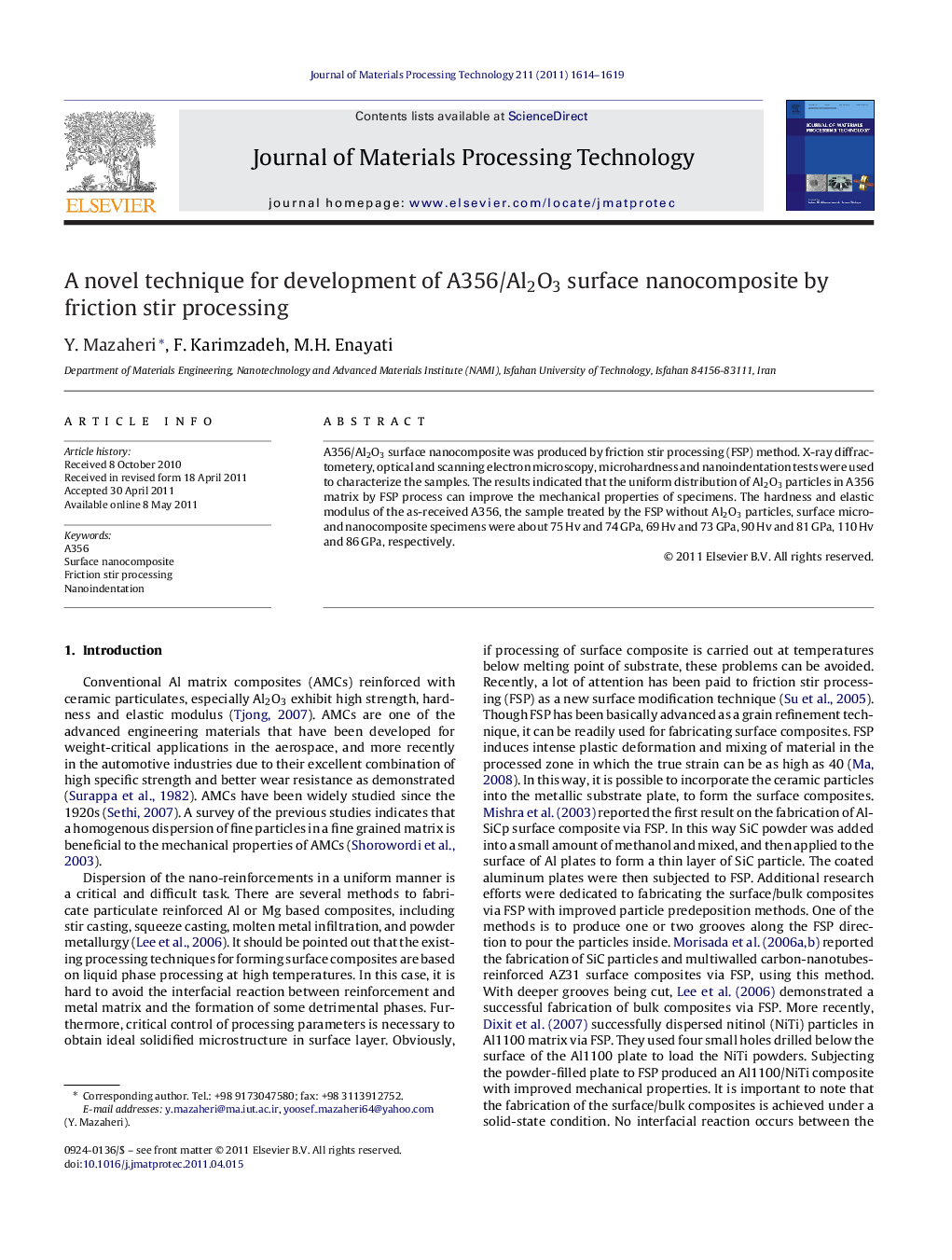| Article ID | Journal | Published Year | Pages | File Type |
|---|---|---|---|---|
| 798405 | Journal of Materials Processing Technology | 2011 | 6 Pages |
A356/Al2O3 surface nanocomposite was produced by friction stir processing (FSP) method. X-ray diffractometery, optical and scanning electron microscopy, microhardness and nanoindentation tests were used to characterize the samples. The results indicated that the uniform distribution of Al2O3 particles in A356 matrix by FSP process can improve the mechanical properties of specimens. The hardness and elastic modulus of the as-received A356, the sample treated by the FSP without Al2O3 particles, surface micro- and nanocomposite specimens were about 75 Hv and 74 GPa, 69 Hv and 73 GPa, 90 Hv and 81 GPa, 110 Hv and 86 GPa, respectively.
Graphical abstractIn this research, development of A356/Al2O3 surface nanocomposite by friction stir processing (FSP) method was investigated. For this purpose, first A356/Al2O3 composite powders were prepared by mechanical milling of A356 chips and 5 vol.% micro and nanosized alumina particles. Then the milled powders were used as feedstock to deposit composite coatings on A356-T6 substrate using high velocity oxy-fuel (HVOF) process. Finally the aluminum plates with preplaced composite layers were subjected to FSP. With the optimized tool design and processing parameters, composite layers with well distributed particles and a good bonding with the aluminum substrates, was generated.Figure optionsDownload full-size imageDownload as PowerPoint slideHighlights► Development of A356/Al2O3 surface nanocomposite by friction stir processing (FSP) method. ► Mechanical properties enhancement with the incorporation of Al2O3 particles by FSP. ► Good agreement between the hardness values obtained by nanoindentation technique and values measured using Vickers hardness tester.
